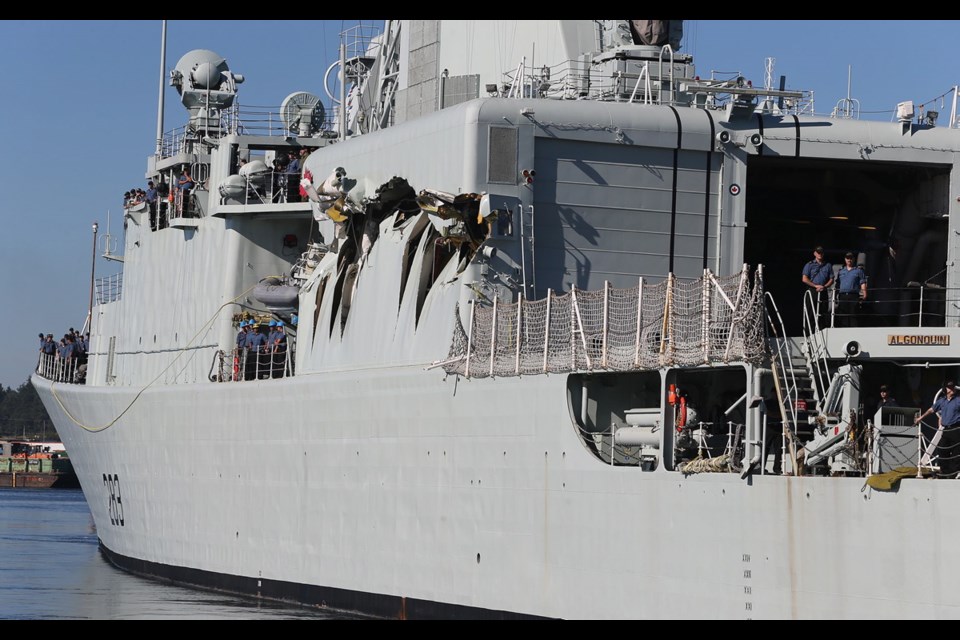Decommissioned Royal Canadian Navy ships HMCS Protecteur and HMCS Algonquin are headed 7,600 nautical miles for demolition in Nova Scotia.
Ottawa awarded the $39-million scrapping contract on Nov. 27 to R.J. MacIsaac Construction Ltd. of Antigonish, N.S. The ships, still moored at Canadian Forces Base Esquimalt, are expected to be towed south along the Pacific coast, through the Panama Canal and north to the Maritimes.
No Victoria or West Coast shipyards submitted a bid for the enormous demolition task, estimated to take as long as a year in drydock for one vessel, said Joe O’Rourke, general manager of Seaspan Victoria Shipyards. Seaspan was asked to bid on the demolition but declined, he said.
“Scrapping is a very complex and at times dangerous business of cutting up and disposing of an old vessel,” he said, made more complex for Protecteur given it caught on fire and produced hazardous materials.
Protecteur, a supply ship, was critically damaged in February 2014, forcing it to be towed to Pearl Harbor, Hawaii, and then back to CFB Esquimalt. About six months earlier, it sustained damage to its bow after colliding with Algonquin, a destroyer, during a towing exercise en route to Hawaii. Algonquin was heavily damaged on its port-side hangar.
O’Rourke said he knows of no B.C. company with expertise in scrapping large vessels, “especially to the level of detail and reporting requirements” of the Department of National Defence.
A successful local demolition bid would have dominated the Esquimalt Graving Dock, owned by Ottawa, for more than a year for one ship, he estimated, in order to ensure any leaks of hazardous fluids were captured in drydock.
The R.J. MacIsaac contract expires March 31, 2017, according to a document from Public Works and Government Services Canada.
“The best interest for us and for Canada was for someone qualified to do it in a safe manner and an environmentally correct manner, and the companies that have the history of doing so are located on the East Coast,” O’Rourke said.
Seaspan concentrates on repair and upgrade work, he said. “We can provide better jobs and more jobs by doing what we do right now.” The company has about 650 employees, most of them devoted to modernizing 12 Halifax-class frigates for the navy to the tune of $350 million, and working on a three-year upgrade for submarine HMCS Corner Brook.
Seaspan, headquartered in North Vancouver, did bid on preparation of the vessels for towing, but did not get those contracts, which O’Rourke described as “not significant.” He estimated the lengthy tow would cost millions of dollars.
Christopher Clarke, mayor of Queens Regional Municipality in Nova Scotia where much of the demolition work is expected to be done, told Halifax’s Chronicle Herald Wednesday that up to 40 jobs will be created when HMCS Protecteur arrives around April 1 and HMCS Algonquin in July.
R.J. MacIsaac describes itself on its website as a marine construction and demolition company. Last year, it was lead contractor in the multi-million-dollar cleanup of the MV Miner bulk carrier shipwreck off the coast of Cape Breton.



